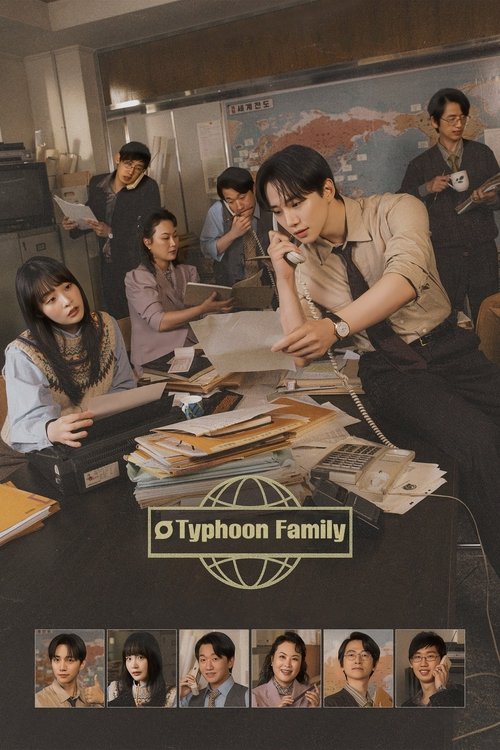
Ask Your Own Question
What is the plot?
In "Episode 5" of "Příběhy českých zločinů," the story begins with a tense atmosphere as the police receive a call about a missing person. The scene opens in a small, dimly lit apartment where a young woman named Klára is last seen. Her friends express concern as they recount the last time they saw her at a local bar, where she was in good spirits but left abruptly with an unknown man.
The narrative shifts to the police station, where detectives are gathered to discuss the case. Detective Novák, a seasoned investigator, takes the lead. He emphasizes the urgency of the situation, noting that Klára's disappearance could be linked to a series of similar cases in the area. The detectives begin to piece together Klára's last known movements, interviewing her friends and examining surveillance footage from the bar.
As the investigation unfolds, the scene transitions to a dark, secluded location where Klára is being held captive. The captor, a man with a troubled past, is shown struggling with his own demons. He exhibits erratic behavior, revealing his internal conflict and the motivations behind his actions. Klára, terrified and desperate, tries to reason with him, pleading for her release. Her fear is palpable as she realizes the gravity of her situation.
Back at the police station, the detectives receive a breakthrough when they identify the man seen leaving the bar with Klára. They discover his identity through the surveillance footage and begin to track his movements. The tension escalates as they race against time to locate Klára before it's too late. Detective Novák leads a team to the suspect's last known address, hoping to find clues that will lead them to her.
The scene shifts back to the captor, who becomes increasingly unstable. He lashes out at Klára, revealing his violent tendencies. Klára, in a moment of desperation, attempts to escape, but her efforts are thwarted. The emotional weight of her situation deepens as she grapples with hopelessness and fear, yet she remains determined to survive.
Meanwhile, the police team arrives at the suspect's home, conducting a thorough search. They find evidence that suggests Klára was indeed there, including personal items that belong to her. The detectives piece together the timeline, realizing they are getting closer to finding her. The urgency mounts as they prepare to confront the suspect.
In a pivotal moment, the police locate the suspect's vehicle parked near an abandoned building. They set up a perimeter and prepare to apprehend him. The tension is thick as they approach the building, knowing that Klára's life hangs in the balance. Detective Novák leads the charge, his determination evident as he pushes forward.
Inside the building, Klára's captor is becoming increasingly agitated. He hears noises outside and panics, realizing the police are closing in. In a frantic attempt to escape, he decides to move Klára to a different location. Klára seizes this moment of distraction to fight back, using her surroundings to her advantage. A struggle ensues, showcasing her resilience and desperation.
The police burst into the building just as Klára manages to break free from her captor's grasp. A confrontation occurs between the police and the suspect, leading to a tense standoff. Detective Novák orders the suspect to surrender, but he resists, resulting in a physical altercation. The scene is chaotic, with shouts and the sound of struggle echoing through the abandoned space.
Ultimately, the police manage to subdue the suspect, and Klára is rescued. The emotional release is palpable as she is reunited with the detectives, who reassure her that she is safe now. Klára's relief is evident, but the trauma of her experience lingers in her eyes. The episode concludes with the detectives reflecting on the case, highlighting the complexities of human behavior and the impact of crime on victims.
Related Titles
Browse All Titles →What is the ending?
In the ending of "Příběhy českých zločinů," season 1, episode 5, the investigation reaches a climax as the detectives uncover the truth behind the crime. The main suspect is confronted, leading to a tense standoff. Ultimately, justice is served, but not without emotional turmoil for the characters involved. The episode concludes with a sense of resolution, yet leaves lingering questions about morality and the consequences of one's actions.
As the episode unfolds towards its conclusion, the atmosphere is thick with tension. The detectives, having pieced together the clues, gather in a dimly lit room, their faces etched with determination and fatigue. They discuss the evidence that has led them to the main suspect, a man whose life has been marred by a series of poor choices and a desperate need for redemption.
Scene by scene, the narrative builds. The detectives decide to confront the suspect at an abandoned warehouse, a location that echoes with the ghosts of past decisions. As they approach, the camera captures the flickering lights and the shadows that dance across the walls, symbolizing the darkness that envelops the suspect's life. The lead detective, driven by a mix of duty and personal conviction, feels the weight of the case pressing down on him. He knows that this confrontation could either lead to justice or further tragedy.
Inside the warehouse, the atmosphere is charged. The suspect, a man with a haunted look in his eyes, stands alone, surrounded by remnants of his past. The detectives enter cautiously, their voices steady but firm. They lay out the evidence, each piece a reminder of the choices that have led to this moment. The suspect's emotional state shifts from defiance to despair as he realizes the gravity of his situation. He begins to unravel, revealing the motivations behind his actions--fear, desperation, and a longing for acceptance.
As the confrontation escalates, the tension reaches a breaking point. The suspect, feeling cornered, makes a desperate move. The detectives react swiftly, and a struggle ensues. The scene is chaotic, filled with shouts and the sound of scuffling feet against the concrete floor. In this moment, the lead detective grapples with his own emotions, torn between the need to uphold the law and the empathy he feels for a man who has lost his way.
In the aftermath of the struggle, the suspect is apprehended. The camera lingers on his face, a mixture of relief and regret washing over him. The detectives, though victorious, are left to ponder the cost of their success. The lead detective stands outside the warehouse, the weight of the case still heavy on his shoulders. He reflects on the lives affected by the crime, the families torn apart, and the choices that led them all to this moment.
As the episode draws to a close, the fate of the main characters is revealed. The suspect is taken into custody, facing the consequences of his actions. The lead detective, while satisfied with the resolution, is left with a sense of unease, aware that justice is often a double-edged sword. The emotional toll of the case lingers, hinting at the complexities of human nature and the thin line between right and wrong.
The final scene captures the lead detective walking away from the warehouse, the weight of the world on his shoulders, as the sun begins to set, casting long shadows that symbolize the ongoing struggle between light and darkness in the human experience.
Is there a post-credit scene?
In "Episode 5" of "Příběhy českých zločinů," there is no post-credit scene. The episode concludes without any additional content after the credits roll, focusing instead on wrapping up the narrative and character arcs presented throughout the episode. The story ends on a note that emphasizes the emotional and psychological impact of the events that unfolded, leaving viewers with a sense of closure regarding the main plot.
What crime is central to the plot of Episode 5?
The central crime in Episode 5 revolves around a mysterious murder that takes place in a small town, where the investigation uncovers deep-seated secrets among the townspeople.
Who is the main investigator in Episode 5 and what drives their investigation?
The main investigator in Episode 5 is Detective Janek, whose relentless pursuit of the truth is driven by a personal connection to the victim, as well as a desire to bring justice to the community.
What role do the townspeople play in the investigation?
The townspeople play a crucial role in the investigation, as their testimonies and hidden agendas reveal layers of complexity surrounding the murder, showcasing their fear and mistrust of outsiders.
How does the episode explore the relationship between the victim and the suspects?
The episode intricately explores the relationship between the victim and the suspects, revealing that many had motives tied to jealousy, betrayal, and long-standing grudges, which complicates the investigation.
What emotional struggles does Detective Janek face throughout the episode?
Throughout the episode, Detective Janek grapples with feelings of frustration and helplessness as he confronts the emotional toll of the case, particularly as he uncovers painful truths about the victim's life and the impact on the community.
Is this family friendly?
"Příběhy českých zločinů," particularly in episode 5, delves into themes of crime and moral ambiguity, which may not be suitable for younger audiences or sensitive viewers. The episode features scenes that include:
- Violence: There are depictions of crime scenes that may involve blood or physical altercations, which could be distressing.
- Mature Themes: The narrative explores complex emotional states such as betrayal, fear, and grief, which may be heavy for children to process.
- Criminal Behavior: The portrayal of criminal activities and the psychological impact on victims and perpetrators can be unsettling.
- Emotional Distress: Characters experience significant emotional turmoil, which may evoke feelings of sadness or anxiety.
These elements contribute to a darker atmosphere that may not be appropriate for all viewers, particularly children.













